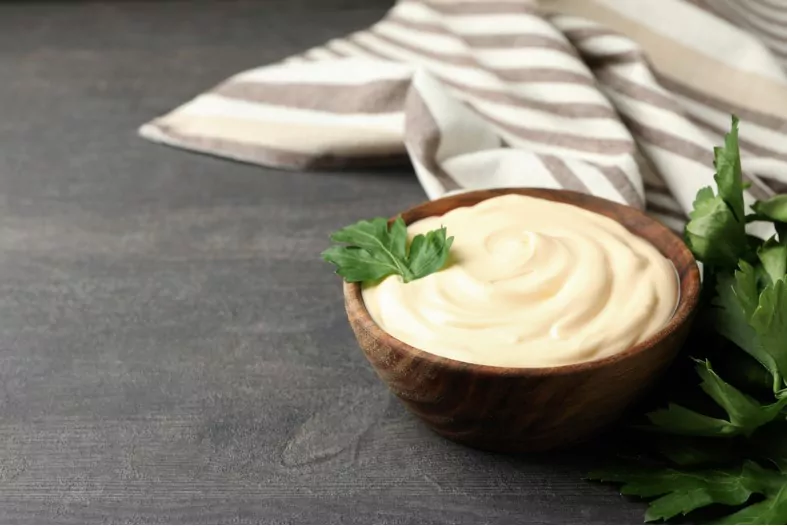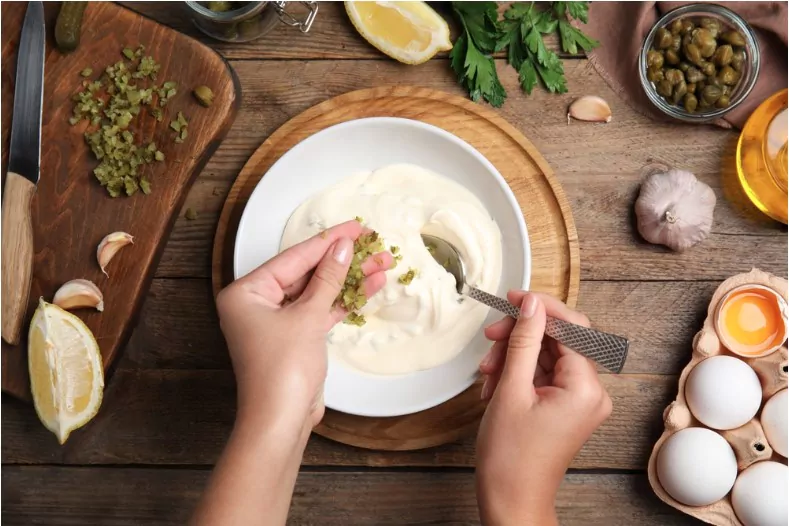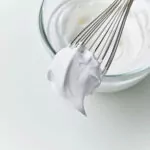How to Use Mayonnaise For Versatile Recipes?

Ah, mayonnaise! With its rich and velvety texture, this creamy condiment has graced our sandwiches, salads, and dips for countless years, adding a touch of indulgence to every bite. From its humble origins to its widespread popularity today, mayonnaise has journeyed through time, becoming an integral part of culinary creations around the world. In this article, we embark on a delightful exploration into the multifaceted wonders of mayonnaise – a kitchen staple that transcends generations and cuisines. Join us as we uncover how to use mayonnaise and versatile applications of mayonnaise in your culinary endeavors, offering insights into both beloved classics and innovative, avant-garde creations that are sure to tantalize your taste buds and inspire your kitchen adventures.
1 Understanding Mayonnaise
Before diving into the methods of making mayo, it’s essential to understand its ingredients. The basic recipe for homemade mayonnaise (or homemade mayo as many prefer to call it) primarily consists of egg yolk, oil, and a touch of acid, such as lemon juice or vinegar.
2 The Classic Homemade Mayonnaise Recipe
For an easy homemade mayonnaise, here’s a fundamental recipe:
Ingredients
- 2 egg yolks (preferably room temperature eggs)
- 1 tablespoon Dijon mustard
- 2 teaspoons bottled lemon juice or white wine vinegar
- 1 cup of light olive oil or any neutral flavored oil like canola oil or sunflower oil
- Salt, to taste
Method

- In a food processor or mixing bowl, combine egg yolks, mustard, and vinegar.
- While whisking constantly or with the processor running, start adding a few drops of oil.
- As the mixture thickens and the mayonnaise starts to form, you can pour all the oil in a thin, steady stream.
- Continue whisking vigorously until the mayonnaise is thick and creamy. If it appears too thick, a few drops of water can be added.
- Season with salt and taste.
Choosing the Right Oil

While olive oil is a popular choice due to its unique flavor, you can experiment with oils like avocado oil or soybean oil. Neutral flavored oil ensures that the taste of eggs and other ingredients shine.
How to Fix Broken Mayonnaise?
Every now and then, even seasoned chefs encounter broken mayonnaise. Don’t fret; fixing it is simpler than you think. Place a tablespoon of hot water in a bowl and, whisking constantly, slowly add the broken mayo. You’ll be left with a smooth, creamy mayonnaise once more.
Flavor Variations
- Garlic Mayonnaise: Incorporate finely minced garlic for a delightful twist.
- Add fresh herbs like basil or parsley for a herby flavor.
- A splash of apple cider vinegar can replace lemon juice for a tangy alternative.
Health and Nutrition
Many are wary of raw eggs in mayonnaise. Pasteurized eggs are an excellent option for those concerned, offering safety without compromising taste. Moreover, for a health-conscious twist, low fat versions can be made, though these might alter the texture.
3 Unique Uses and Ideas

- Salad Dressing: Combine mayonnaise with lemon juice, chopped herbs, and a touch of mustard for a mayonnaise-based dressing.
- Egg Salad & Potato Salad: A testament to how to use mayonnaise traditionally. Blend in with boiled eggs or potatoes, adding curry powder for a spiced version.
- Russian Salad: A delightful recipe collection of veggies, pineapples, and mayo.
- Tomato Sandwich: Slathered over bread with sliced tomatoes – simple and delicious.
- For a European twist, serve mayonnaise with French fries.
- Marinades and Grilling: Mayonnaise can be used as a base for marinades. Whether you’re grilling fish, chicken, or veggies, mayo helps in keeping them moist. Mix it with some spices, herbs, and a splash of lemon juice, and you have a marinade ready to go!
- Baking: You might be surprised, but mayonnaise can be used in baking too. It can make cakes extra moist. If you’re out of eggs or butter, a dollop of mayonnaise can come to the rescue in your cake or brownie mix.
- Roasted Vegetables: Toss your veggies in a mix of mayonnaise, herbs, and spices before roasting. It can enhance the caramelization process, making them even more delicious.
- Creamy Pasta Sauce: Looking for an easy sauce for your pasta? Melt some cheese into your mayonnaise, add minced garlic or some finely chopped herbs, and you’ve got a rich and creamy pasta sauce.
- Paninis and Toasties: Instead of buttering the outside of your sandwich before grilling, try spreading a thin layer of mayonnaise. It’ll give you a crisp, golden exterior with a delightful flavor.
- Pizza Base: Want a creamy twist on your pizza? Spread a thin layer of mayonnaise on the pizza dough before adding your toppings. It’ll give a tangy flavor and creamy texture to your base.
- Mashed Potatoes: Add mayonnaise to your mashed potatoes for an extra creamy texture. A hint of garlic mayonnaise can also give them a flavorful twist.
- Cheesy Bread: Mix mayonnaise with shredded cheese and some chopped fresh herbs. Spread it on bread slices and broil until golden and bubbly.
- Coleslaw: A classic dish, coleslaw is often made with a mayonnaise-based dressing. You can customize it with added vinegar, mustard, and sugar to balance out the flavors.
- Dips: From a tangy tartar sauce to a spicy chipotle dip, mayo serves as a base for countless dips. Just add the ingredients of your choice, and you’re good to go!
- Tuna or Chicken Salad: Combine mayo with canned tuna or shredded chicken, add some finely chopped veggies like celery or onions, season, and serve it on a bed of greens or as a sandwich.
- Hair and Skin Care: Beyond the kitchen, mayonnaise can be used as a hair mask for added shine and softness. Additionally, it can serve as a moisturizing face mask, thanks to the oils and egg content.
- Smoothie Thickener: For those adventurous in taste, adding a small dollop of mayonnaise to your fruit smoothies can provide extra creaminess.
- Homemade Aioli: Technically aioli and mayonnaise are distinct, but you can make a quick aioli-inspired dip by adding minced garlic, lemon juice, and olive oil to your basic mayo.
- Rich Gravy: Mayonnaise can be added to gravies for a creamy and rich texture. Perfect for your roasts!
4 Tips and Tricks
- Room temperature ingredients: This is pivotal. Using cold eggs might result in a broken emulsion. Always use room-temperature eggs.
- Stick blender magic: An immersion blender or stick blender can make the process faster.
- Additives like added sugar or preservatives differentiate mayo from its tangier cousin, Miracle Whip.
- Always store homemade mayo in a sealed container in the refrigerator.
5 Wrapping Up
This guide aimed to showcase how to use mayonnaise in various culinary avenues. From the basic recipe to myriad uses, it’s clear that this creamy condiment is versatile. Whether you’re making a tomato sandwich, thinking about the nutrition facts, or just adding it to your recipe collection, mayonnaise is indeed a kitchen staple.
Remember, the best mayonnaise is the one tailored to your preference, be it homemade mayo with whole eggs or egg salad with a unique flavor twist. So the next time you reach for that jar, know that a world of culinary possibilities awaits, limited only by your imagination!
Community Q&A
About This Article
This article has been viewed 333 times.



